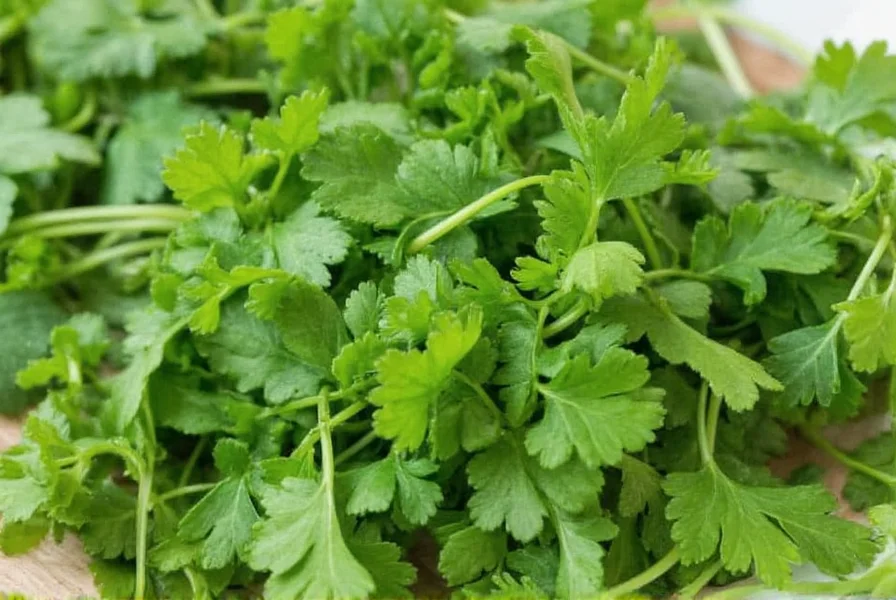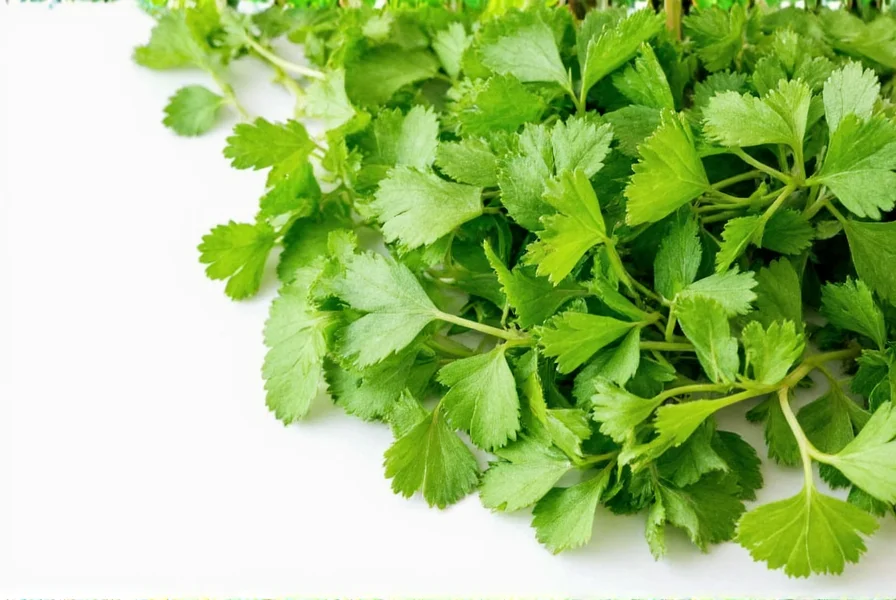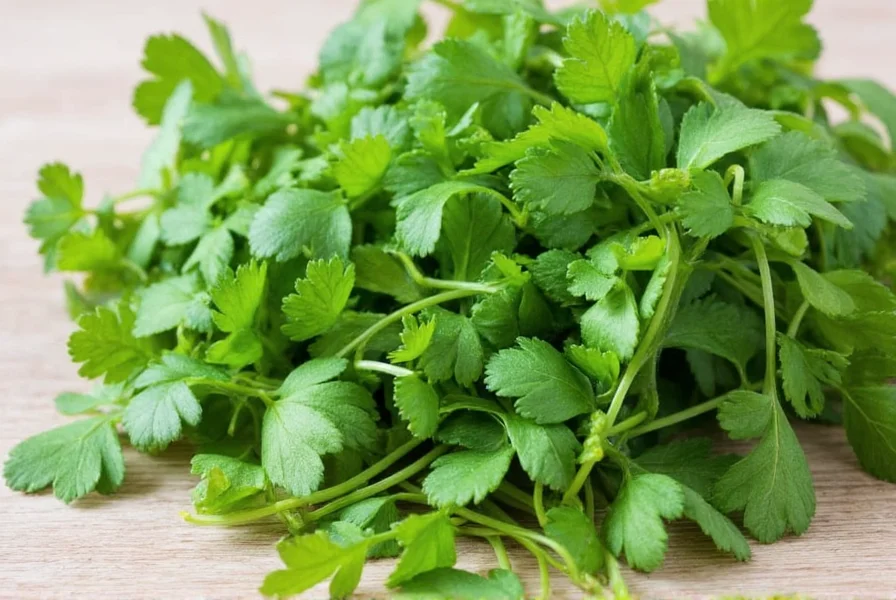Preserving fresh coriander (also known as cilantro) through freezing lets you enjoy its vibrant flavor year-round. Whether you've harvested an abundant crop from your garden or found a great deal at the market, freezing properly extends its shelf life significantly compared to refrigeration alone. This guide details professional techniques developed through years of culinary experience to maintain maximum flavor and texture.
Preparing Coriander for Freezing
Proper preparation determines your frozen coriander's quality. Start by selecting vibrant green, crisp coriander without yellowing or wilting. The washing process requires special attention since trapped moisture causes freezer burn.
Fill a large bowl with cool water and submerge the coriander. Gently swish to dislodge dirt, then lift the herbs out—don't pour them into a colander as this transfers dirt back onto clean leaves. Repeat this process until the water remains clear. For stubborn dirt between stems, use a soft vegetable brush.
Drying is the most critical step many home cooks overlook. Lay the coriander in a single layer on clean kitchen towels or paper towels, then roll gently to absorb surface moisture. Alternatively, use a salad spinner followed by patting dry with towels. The leaves must feel completely dry to the touch before proceeding.

Three Effective Freezing Methods Compared
| Method | Preparation Time | Flavor Retention | Best For | Storage Duration |
|---|---|---|---|---|
| Dry Freeze (Whole) | 15 minutes | Good | Garnishing, soups | 4 months |
| Dry Freeze (Chopped) | 20 minutes | Very Good | Cooking, sauces | 5 months |
| Oil/Water Cubes | 25 minutes | Excellent | Sauces, curries, stews | 6 months |
Detailed Freezing Techniques
Dry Freezing Method
This simplest approach works well for preserving whole leaves. After thorough drying, place coriander in a single layer on a parchment-lined baking sheet. Freeze for 1-2 hours until solid (this prevents clumping). Transfer the frozen leaves to airtight freezer bags, removing as much air as possible before sealing. Label with date and contents.
Chopped Coriander Freezing
For recipes requiring minced coriander, chop leaves finely after drying (avoid chopping stems as they become bitter when frozen). Spread the chopped coriander in a thin layer on a baking sheet and flash freeze for 60-90 minutes. Transfer to labeled freezer containers, leaving 1/2 inch headspace for expansion. This method preserves texture better than freezing whole leaves then chopping later.
Oil or Water Preservation Cubes
This professional technique delivers superior flavor retention. Finely chop coriander and pack tightly into ice cube trays, filling each compartment about 3/4 full. Cover completely with either olive oil (best for Mediterranean dishes) or water (neutral flavor). Freeze until solid, then transfer cubes to labeled freezer bags. The oil prevents oxidation while adding flavor to dishes.

Storage and Usage Guidelines
Store frozen coriander at 0°F (-18°C) or lower for optimal preservation. Keep away from the freezer door where temperature fluctuates. Vacuum-sealed containers extend shelf life by 25% compared to standard freezer bags.
When cooking, add frozen coriander directly to hot dishes—never thaw first as this accelerates texture degradation. For cold applications like salads or garnishes, whole frozen leaves work better than chopped. Frozen coriander works perfectly in cooked dishes but loses crispness, making it unsuitable for fresh applications like salsa.
Avoiding Common Freezing Mistakes
Many home cooks compromise their frozen coriander's quality through preventable errors. Never skip the thorough drying step—moisture creates ice crystals that destroy cell structure. Avoid overpacking containers, which causes freezer burn. Don't use thin plastic bags that develop micro-tears in the freezer. Most importantly, don't freeze coriander with high water content still present in the leaves.
For gardeners with abundant harvests, consider freezing coriander in recipe-sized portions. Measure typical amounts you use (like 2 tablespoons for curries or 1/4 cup for salsas) before freezing to avoid repeated thawing and refreezing.
Shelf Life and Quality Indicators
Properly frozen coriander maintains peak quality for 4-6 months. Beyond this, flavor gradually diminishes though it remains safe to eat. Check frozen coriander periodically for these quality indicators:
- Color change: Significant darkening indicates degradation
- Ice crystals: Heavy crystallization suggests temperature fluctuations
- Odor transfer: Absorbing freezer odors means inadequate sealing
- Texture: Mushiness after thawing indicates poor preparation
For the best results when using frozen coriander, incorporate it during the final cooking stages to preserve volatile flavor compounds. Add oil-preserved cubes directly to hot pans, allowing the oil to distribute the flavor evenly throughout your dish.
Frequently Asked Questions
Can you freeze coriander without blanching?
Yes, coriander freezes well without blanching. Unlike some vegetables, blanching damages coriander's delicate flavor compounds. The key is thorough drying before freezing to prevent ice crystal formation that would otherwise occur with blanched herbs.
How long does frozen coriander last in the freezer?
Properly frozen coriander maintains good quality for 4-6 months at 0°F (-18°C). When stored in vacuum-sealed containers with all air removed, it can last up to 8 months with minimal flavor loss. Always label containers with freezing dates to track freshness.
Does frozen coriander work well in fresh applications like salsa?
Frozen coriander doesn't work well in fresh applications due to texture changes from ice crystal formation. It's best reserved for cooked dishes like curries, soups, and stews where texture matters less. For fresh applications, consider making coriander pesto and freezing that instead.
What's the best way to thaw frozen coriander?
For cooking applications, add frozen coriander directly to hot dishes without thawing. Thawing causes texture degradation and flavor loss. If you must thaw (for specific recipes), place the sealed container in the refrigerator for 4-6 hours. Never thaw at room temperature as this accelerates spoilage.
Can you freeze coriander stems along with leaves?
It's best to separate stems from leaves before freezing. Stems contain different flavor compounds that become bitter when frozen. Use tender young stems in cooking immediately, but freeze only the leaves for best results. Mature stems don't freeze well and develop unpleasant textures.











 浙公网安备
33010002000092号
浙公网安备
33010002000092号 浙B2-20120091-4
浙B2-20120091-4